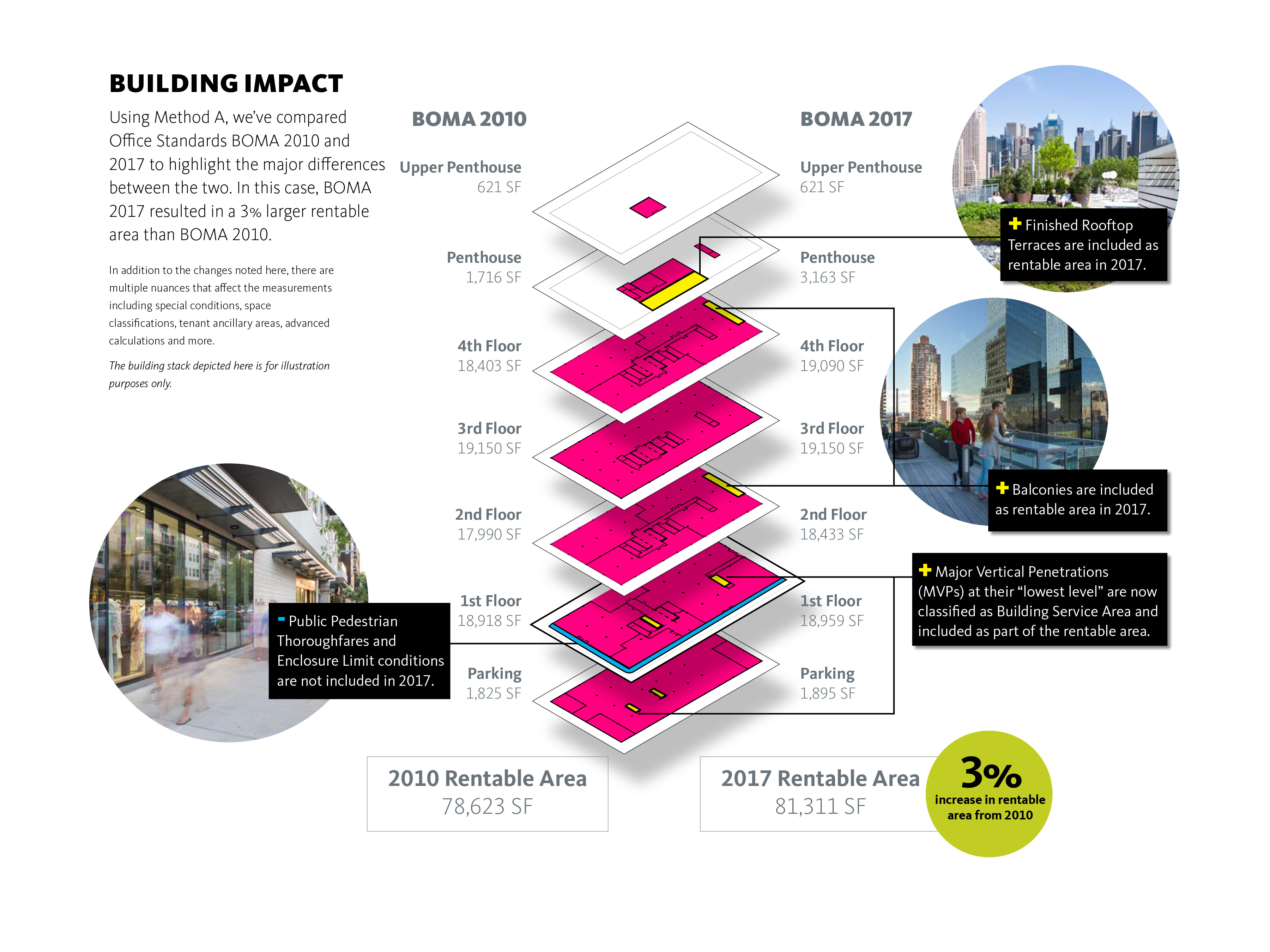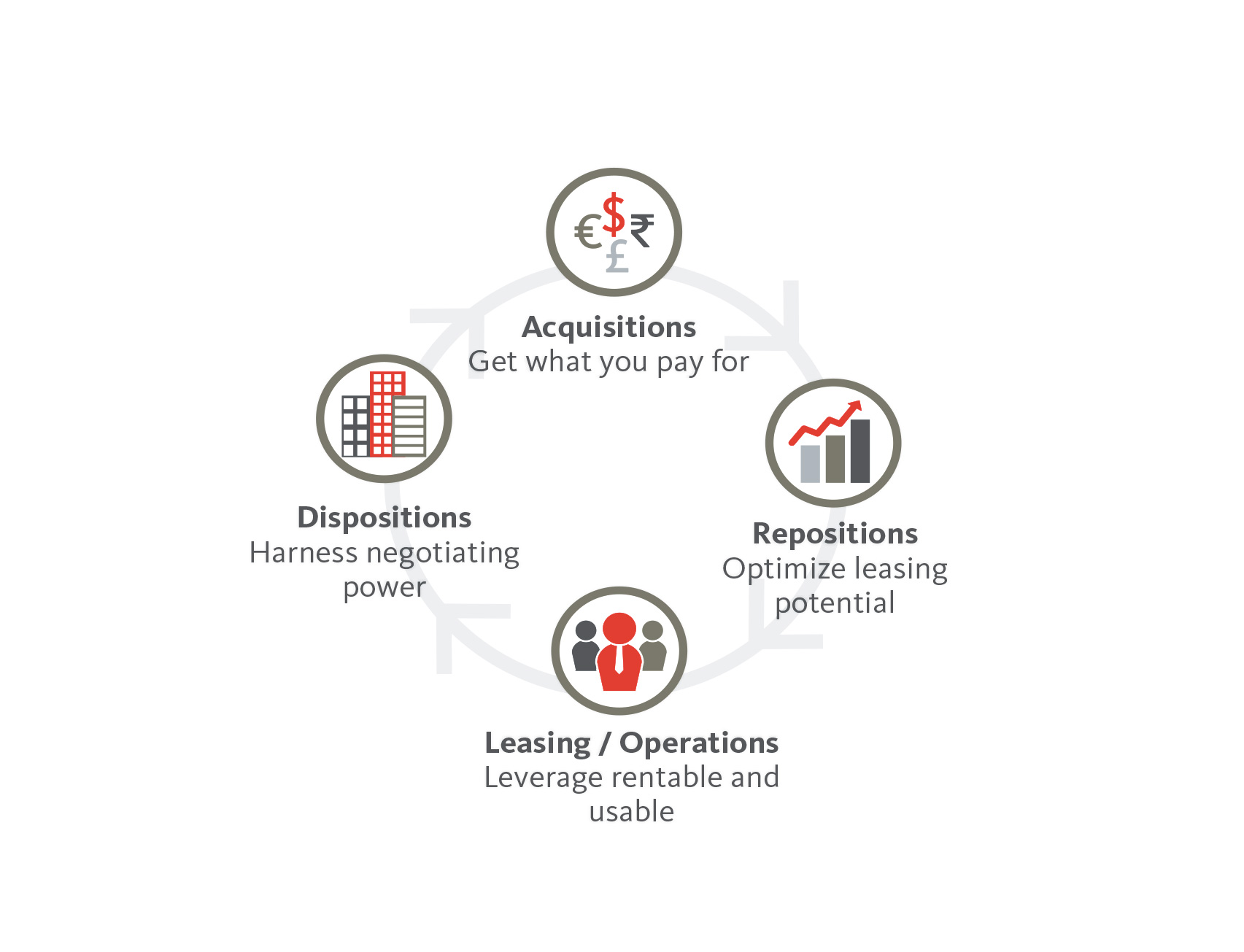Comparing Boma 2010 and 2017 Office Standards
This fall, the Building Owners and Managers Association International (BOMA) will release the latest version of its Office Standard, which provides a uniform basis for measuring rentable area in both existing and new office buildings. The 2017 version will adopt the best practices learned from the 2010 Standard and seeks to accommodate design and amenity trends, which have evolved since the previous standard was released. The updates will impact the way that building measurements are calculated and may change the rentable area of a building that was measured with either BOMA 1996 or 2010 Office.
“Misunderstood and misinterpreted building measurement data can result in serious implications when negotiating the sale, purchase, or lease of a building,” says BOMA practitioner, Mitch Luehring, “With 2017, BOMA has curated a more tightly defined Office Standard that reigns in many of the arbitrary ‘modified BOMA’ interpretations out in the marketplace.”
Building Impact
In addition to potential change to the rentable area, BOMA 2017 Office allows more transparency into building transactions by creating an equitable way to proportionally divide space, allowing a better comparison of buildings.
“In the past, there has not been a consistent method for building owners to account for tenant amenities, such as rooftop terraces and balconies. BOMA is now catching up to the market, and the new standard will provide greater clarity for all parties into how rentable numbers are calculated,” said Gensler’s Eric Evenstad.
To highlight the major differences between BOMA 2010 Office and BOMA 2017 Office, we measured a building with both standards using Method A. In this case, BOMA 2017 resulted in a 3% larger rentable area than BOMA 2010. Below, we’ve indicated some of the impactful changes that affected the numbers. Please note that in addition to the changes noted, there are multiple nuances that affect the measurements including special conditions, space classifications, tenant ancillary areas, advanced calculations and more.

How will BOMA 2017 Office standard affect your building?
While the example above shows a three percent increase in rentable, each situation is different. The impact on the rentable area of other office buildings may be larger or smaller. After the new Office Standard releases in September, measuring with 2010 or even 1996 will still be an option. Understanding the nuances of each standard becomes important for determining which standard will be most advantageous for a situation.
Gensler’s Area Measurements Team supports tenants, landlords, owners, managers and real estate investors — all of whom rely on accurate measurements for their real estate transactions. As representatives for both building owners and occupiers, Gensler remains a third party to transactions and stays focused on measurement accuracy and adherence to the BOMA standard.
“Gensler’s goal is to help clients understand the impact of their area measurements so that they make informed decisions,” said Evenstad. “Attention to detail and alignment with the standard is critical because of the financial impact the numbers have. Every project we touch is part of an ongoing relationship that’s rooted in collaboration and trust.”

The Real Estate Lifecycle
With representatives on three of BOMA’s floor area measurement committees, Gensler is well-versed in the coming measurement changes and the impacts they may have during all phases of the real estate lifecycle, including new construction and repositioning.
“Working with accurate building measurements throughout the design process can improve building efficiency by repeatedly comparing how design changes are impacting the usable-to-rentable area ratio. It becomes critical to maintain this when approaching groundbreaking to ensure that the actual rentable area still matches the target rentable area of the new building,” says BOMA practitioner Garett Naff.
With the new standard slated to release in the fall of 2017, we will be following the rollout and monitoring the overall impact that it has on buildings of all shapes and sizes.
Need a BOMA Study? Learn more about Gensler’s Building Measurement Services or contact us at 844.412.9251 | .

